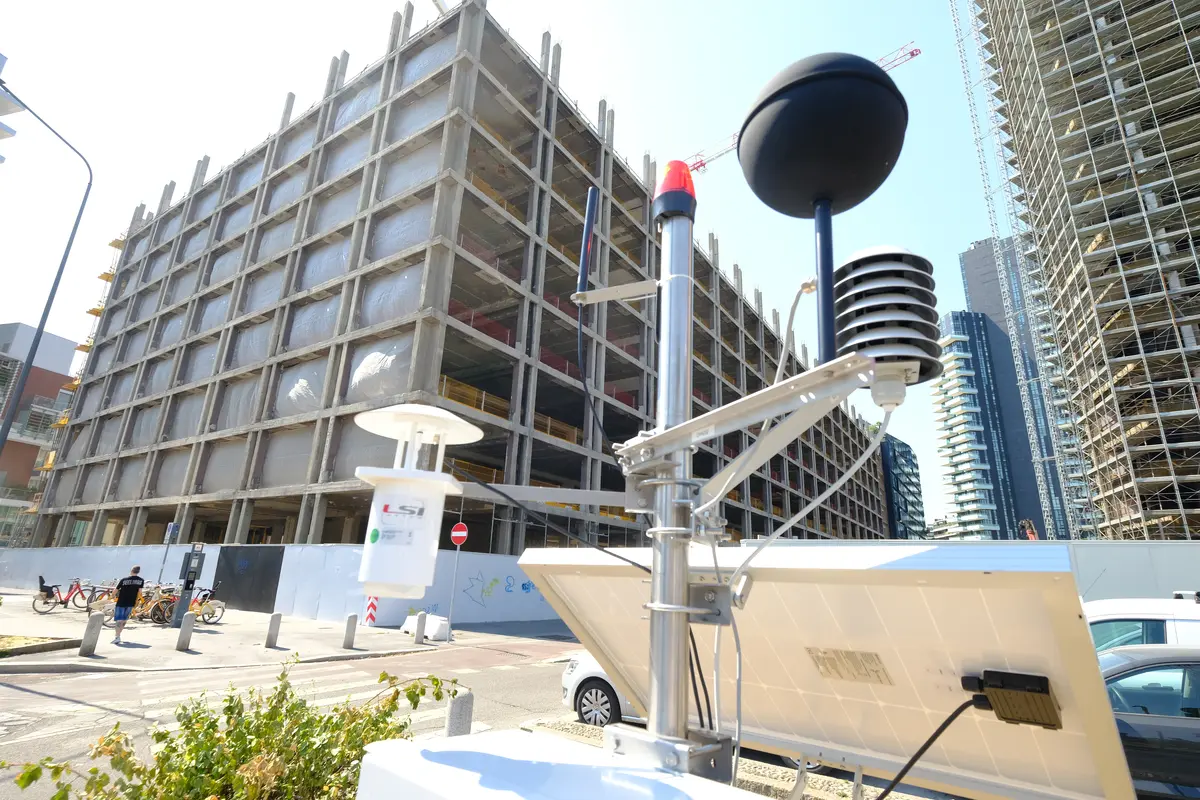Outdoor Monitoring Systems for Heat Stress (WBGT and UTCI)
Increase in Heat Stress in the Environment
 Climate change is a process whose effects are also being felt in the Netherlands and Belgium. In recent years, the number of tropical days in summer has increased in our regions. Urban areas in the Netherlands and Belgium are fundamentally not designed for the current high temperatures. Depending on the surroundings of a home or building, risks of heat stress may occur.
Climate change is a process whose effects are also being felt in the Netherlands and Belgium. In recent years, the number of tropical days in summer has increased in our regions. Urban areas in the Netherlands and Belgium are fundamentally not designed for the current high temperatures. Depending on the surroundings of a home or building, risks of heat stress may occur.
Heatwaves combined with lots of stone, concrete, asphalt, steel, and little greenery in the area pose risks. Exposure to heat is increasingly becoming a societal risk. In addition to the danger of heat-related illnesses for vulnerable people, indirect risks are also rising due to people being less rested and less able to concentrate. The chances of mistakes and accidents increase during prolonged periods of heat.
Greening as a Measure Against Heat Load
Heat load in neighborhoods can be reduced. Greening is a proven measure to significantly cool the environment. Trees are especially effective, providing shade and actually lowering the ambient temperature through water evaporation. Other added benefits of greening include better water infiltration and reduced runoff peaks during heavy rainfall. Naturally, greenery also contributes to people feeling more comfortable and energetic!
Importance of Thermal Comfort and Heat Perception
The actual experience or even risk due to heat cannot be captured by dry air temperature alone. When heat becomes a reality, it is important to accurately assess how well heat can be dissipated from the human body and how to keep homes and shelters as cool as possible. Assessing thermal perception is also crucial.
Monitoring Thermal Parameters for Timely Interventions
Timely identification of risks and thus timely intervention is possible through monitoring thermal parameters. These can be translated into usable indices such as the WBGT index (Wet Bulb Globe Temperature) or the UTCI (Universal Thermal Climate Index). The WBGT is commonly used in the field of occupational safety. The UTCI is a more recent index based on air temperature, relative humidity, globe temperature, and wind speed. The UTCI is an estimate of the perceived temperature experienced by the human body. Inputs for this index include air temperature, dew point, mean radiant temperature, and wind speed. This makes it applicable to both cold and hot environments, thus making it a universal index.
Ravebo’s Flexible Monitoring Systems for Thermal Environments
A weather station with the right sensors and data acquisition makes monitoring very easy. Ravebo has extensive experience in monitoring thermal environments. Whether for indoor climate or safety in the event of heat stress, Ravebo B.V. has developed and delivered the necessary mobile and stationary monitoring systems. These systems are also available for outdoor conditions. Outdoor WBGT systems, UTCI monitors, or even comprehensive weather stations are part of our offering. These systems can be equipped with batteries and solar panels, allowing them to operate autonomously. This makes them highly flexible and easy to relocate, for example, during research. Via GSM modem, continuous remote access to the data is possible.
